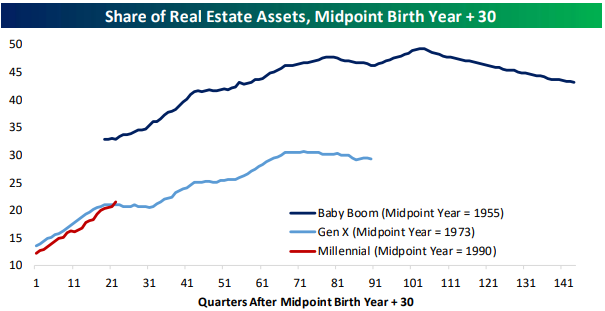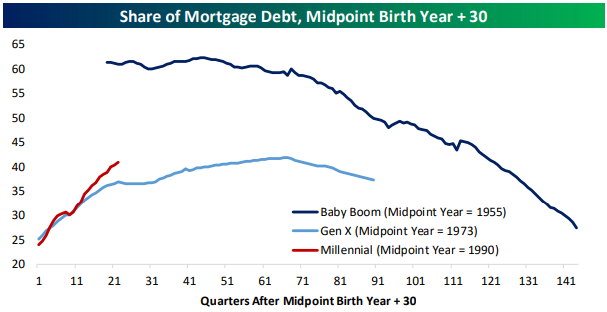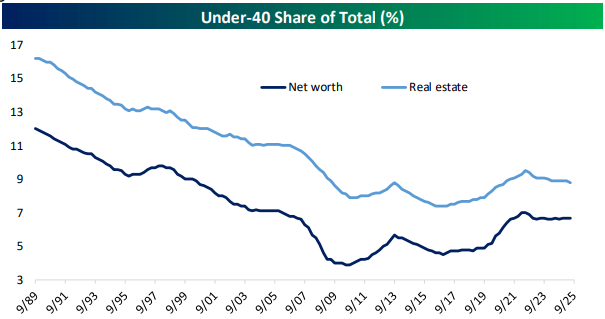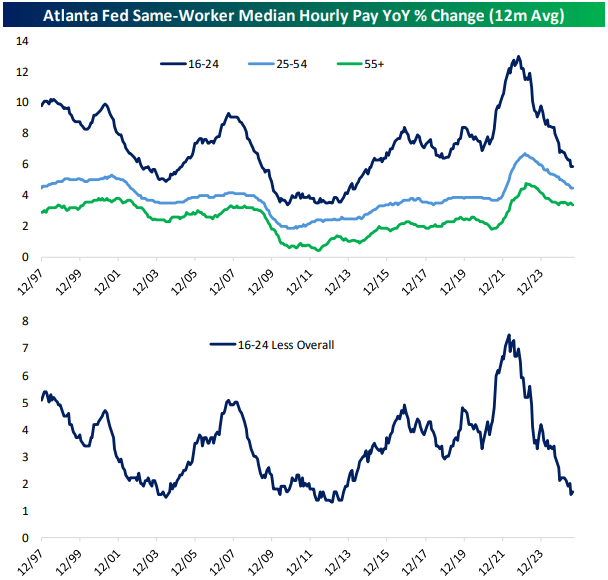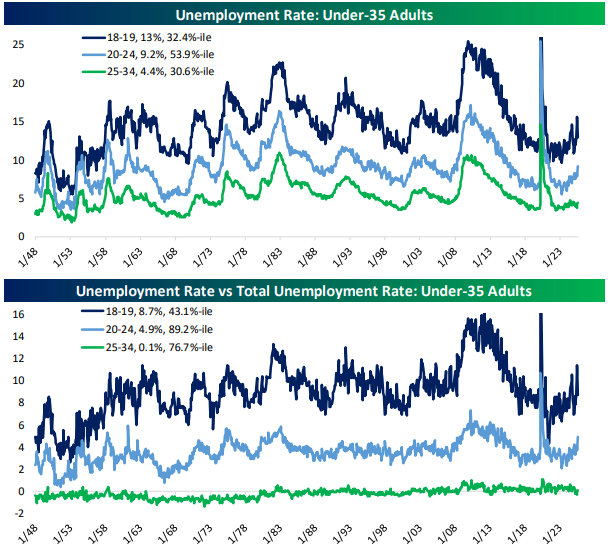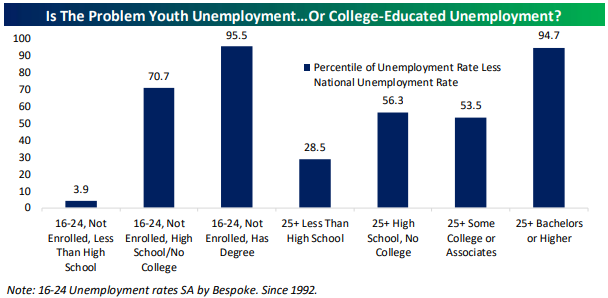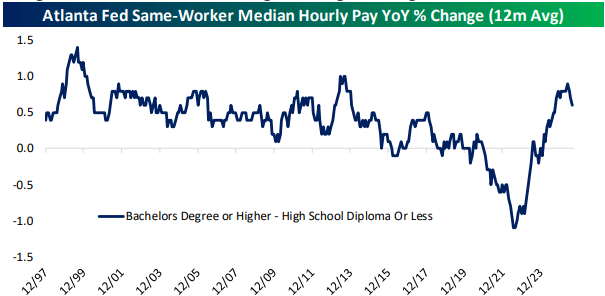Good morning. There’s news on this Veterans Day that the government shutdown could be coming to an end. Let’s be hopeful because, among other reasons, as of last week we’ve blown past the record for the longest shutdown in our history. This holiday reminds us that we helped end WWI, so we ought to be able to run a government. Besides that, the day also calls us to remember those who served in the armed forces. Thank you for your service.
On to this week's post... anxiety has been growing in some circles about how extended the stock market is getting and when, not if, the AI bubble fueling it will pop. Granted, there has been a huge amount of spending in this space and plenty more is planned, but is this a bubble like we saw back in the late 90s? While it’s easy these days to latch onto narratives that clearly guide us one way or the other, the reality is always more complicated.
I was initially going to add multiple layers of information to what I’m posting below showing an overall healthy economic backdrop for the AI boom, but my post was getting too long. I may include some of the other information next week. So today I’m sharing portions of a recent piece from JPMorgan that downplays comparisons to the Dot-com bubble. There are important differences, of course, but it’s important to remember that these things never play out in exactly the same way. The point is to keep paying attention.
I generally agree with the opinions below but, among other things, all of this speaks to the importance of diversification when managing a portfolio for the long run. Spread your investment money around prudently, monitor, rebalance/take profits, repeat. Artificial intelligence may well end up reinventing our economy the way the Internet did, but your financial future shouldn’t wholly depend on it.
From JPMorgan…
… the Magnificent 7 [Apple, Microsoft, Google, Amazon, Nvidia, Meta, Tesla] is looking less like a cohesive monolith, with more dispersion emerging underneath the surface in profits and performance. It is also giving way to a broader AI ecosystem.
Although massive investment in AI echoes the dot com bubble, this time, demand is real, financing is high quality and leverage-lite and circularity is strategic.
As prices hit all-time highs, and announcements about more capex, billion-dollar investment deals and debt issuance fly around, investors are growing concerned we’re in a bubble.
Railroads, electricity, landlines, cars, plastic, shale, internet. AI might be new, but innovations that spur capital investment cycles are not. Profits and productivity have always materialized eventually, but some of the time, though not all the time, markets have gotten ahead of themselves. It’s still early days for AI, but we’re not seeing too many signs of excessive exuberance.
In previous technological transformations, first movers haven’t always reaped the benefits. WorldCom, Global Crossing, and Level 3 built the internet we still use today, but two of the three went bankrupt. They grew investments faster than demand, prices collapsed, and a decade later, companies like Amazon and Google swooped in and built trillion-dollar businesses on that glut of free bandwidth. But today’s hyperscalers [big cloud service providers that operate massive data centers] aren’t just building the compute AI needs to run. They also own and operate the network, architect the software layers on top and control the distribution. The AI transition is different in a few critical ways:
Profits are keeping pace with enthusiasm. Since the launch of ChatGPT, the info tech sector has risen 158%, supported by soaring profit growth. In contrast, returns became untethered from earnings growth during the dot com bubble. This doesn’t preclude a future AI bubble, but for now, price and earnings look reasonably aligned.
Demand precedes – not succeeds – investment. The hyperscalers have already invested close to $600bn in AI, and the bill keeps on getting bigger. After 3Q25 earnings reports, consensus estimates for 2026 and 2027 capex [capital expenditures] have increased by $47bn and $61bn, respectively. But it’s still not enough to meet existing demand. This earnings season, cloud providers reported an aggregate $1,202bn in backlog. Google has “signed more deals over $1billion through Q3 this year than…in the previous two years combined,” and Amazon’s CEO highlighted, “AWS is growing at a pace we haven’t seen since 2022.” While Meta’s stock sold off after it raised both 2025 and 2026 capex guidance, CEO Mark Zuckerberg doesn’t think it will go to waste: “I think that it's the right strategy to aggressively frontload building capacity…That way, if superintelligence arrives sooner, we will be ideally positioned for a generational paradigm shift...If it takes longer, then we'll use the extra compute to accelerate our core business which continues to be able to profitably use much more compute than we've been able to throw at it.”
Financing is mostly cash – not debt. Hyperscalers are investing massive amounts into AI, but they generate massive amounts of cash each quarter too. Free cash flow is down from its 2024 peak of $238bn but still strong at $188bn, and growth is projected to inflect in 2026. Some of these companies have also started to tap both public and private debt markets to fund data centers. In and of itself, this isn’t a bad thing, as debt is part of an optimal capital structure, but it’s a risk worth watching, especially as less profitable companies lever up.
Strategic circularity. The hyperscalers spend 18% of their cost of goods sold on NVIDIA and represent 42% of NVIDIA’s revenue. Add to that multi-billion-dollar deals announced between chip makers, hyperscalers and LLM developers, and investors are growing rightfully concerned about who’s footing the bill. Some have even compared it to telecom carriers’ buying up each other’s excess fiber cable capacity during the internet bubble. However, today’s AI deals are strategic investments tied to real demand, built on exponential revenue growth. Rather than circularity, these deals represent competition, as leading LLM developers secure compute from multiple cloud providers, who have deals with other LLMs.
Still, investors shouldn’t get complacent. Power and GPU supply could constrain growth to below expectations, though this could help prevent excess supply. Adoption appears to be rapid, but sticky revenues from paid subscribers with enterprise-driven use cases are not guaranteed. Faster chip obsolescence could also change the economics. Even a 1-year haircut on the useful life of AI infrastructure could be a 3% hit to earnings. And although circularity may be an essential foundation of investment today, one damaged link could have an outsized impact.
We might not be in another internet bubble, but today’s megacap tech giants aren’t destined for eternal domination either. They’re competing against each other, and disruptors will inevitably emerge. With valuations this high, and investments this astronomical, there isn’t much room for error.
Here’s a link to JPMorgan’s full article if you’re interested…
https://am.jpmorgan.com
Have questions? Ask us. We can help.
